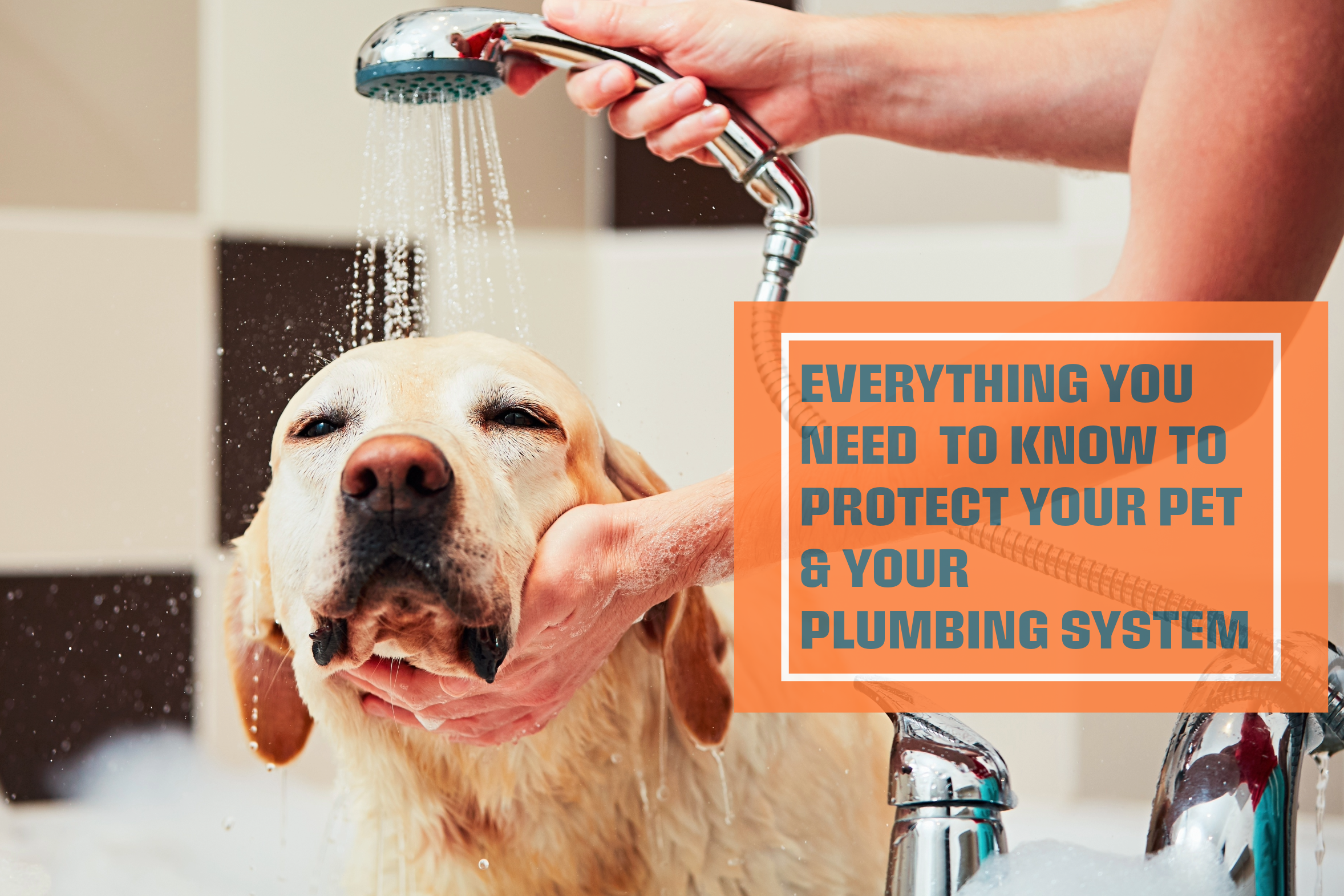May is National Pet Month, a time to celebrate our beloved pets. At Upper Arlington Plumbing & Drain, we recognize that every family member, including those with four legs and fur, is important. As a responsible pet owner, your primary concern is the safety, happiness, and health of your pet. Similarly, as a homeowner, ensuring your plumbing system operates optimally is also crucial. Now, it’s important to acknowledge that even pets with minimal maintenance needs can affect your household maintenance, including the plumbing system, if not managed correctly. Therefore, we invite you to explore with us how to effectively safeguard both your pets and your plumbing system.
Grooming Your Pet
When you maintain your pets’ grooming, it not only aids in keeping their coat healthy, but it also helps in the maintenance of your home. However, grooming your pets by yourself at home does present certain challenges – especially for your plumbing system.
Baths: Here are some tips to lessen the strain on your pipes during baths.
- Installing a hand-held showerhead can enhance the pet bathing process, offering a more seamless experience. So, if you don’t already have one, we highly recommend considering getting one.
- What about your drains? Do you have something over them to protect them from clogging up with loose fur during bathtime? One great solution you can implement is a drain screen. They are simple and affordable contraptions placed directly over your drains to catch loose hair and other debris.
- When possible, (and if feasible for you) you should bathe your pet outside. Doing so eliminates the possibility of clogging up your tub drain altogether. If you prefer using a tub to bathe your pet, there are outdoor pet bathtubs you can acquire to help make this process easier for you.
Fur Brushing: Regular grooming of your pet is crucial for minimizing shedding and reducing the accumulation of hair in your home, particularly within your plumbing system.
- Make sure to use the correct brush tailored to your pet’s specific fur type as this facilitates a smoother process.
- For optimal outcomes and to reduce the dispersal of hair indoors, brush your pet outside if possible.
- For owners of long-haired pets, it is advisable to implement a weekly brushing regimen. At least once a week is good, but you can always incorporate more. This helpful habit not only promotes the health of your pet’s coat but also mitigates potential stress on your plumbing system during bathing sessions.
Disposing of Old Pet Food & Pet Waste
Pet Food: Disposing of dry pet food (kibble) down the kitchen sink and using the garbage disposal is strongly discouraged. This is because dry pet food expands upon absorbing water, potentially causing significant clogs within the plumbing system. On top of that, once the wet food dries, it hardens, further exacerbating the blockage problem. The best thing you can do is dispose of unused pet food in the trash bin to prevent this particular plumbing problem.
Cat Litter: Managing pet waste is a fundamental part of pet ownership – there’s really no way around it. Did you know the disposal method of your pet’s waste can have a considerable impact on your home’s plumbing system? Contrary to popular belief, flushing kitty litter down the toilet is most definitely not advisable. The majority of kitty litter is not formulated to dissolve in water, which can absolutely lead to extreme blockages within your plumbing system.
Though certain kitty litter is advertised as “flushable”, it is wise to refrain from flushing cat litter down the toilet altogether. Although they are labeled as flushable due to their claims of biodegradability, “flushable cat litter” decomposes at a slow rate, which can result in the gradual accumulation of clogs as undissolved clumps gather within the system. Consequently, we firmly believe that the potential damage to your plumbing, coupled with the risk of expensive and inconvenient repairs, significantly outweighs the convenience offered.
Considering Other Pet Safety Tips
Diggers: It’s always a good idea to exercise caution with pets inclined to dig. It’s understood that dogs will exhibit their natural behaviors, and we fully support this. However, as a homeowner, you want to monitor your adventurous dog to prevent digging near your home’s foundation or buried pipelines. Our goal is to assist in safeguarding the integrity of your plumbing system, and equally, this advice serves to protect your pet’s safety.
Toilet Water Drinkers: If you have a pet with a high water intake, you may frequently find your cherished animal companion consuming water directly from your toilet bowl. While this may appear to be harmless (though rather gross), it actually poses a health risk to your pet. Why? Products designed to maintain toilet cleanliness, such as toilet tabs, bowl stamps, rim hangers, and other chemical cleaners, contain potent chemicals that can jeopardize your pet’s health if ingested. To protect your pet’s well-being, it is recommended to keep the toilet lid closed when not in use and consider installing a child-proof lock for pets that are particularly tenacious.
Preventive care and planning ahead are critical in extending the lifespan of your plumbing system and safeguarding both your pets and the plumbing infrastructure. For further guidance on maintaining your home and plumbing system, feel free to check out our extensive library of blog posts.
If you encounter any issues or have questions, we are more than happy to provide assistance. Upper Arlington Plumbing & Drain is open 24/7, 365 days a year. Contact us today on (614) 363-1924 or schedule an appointment by clicking here!




